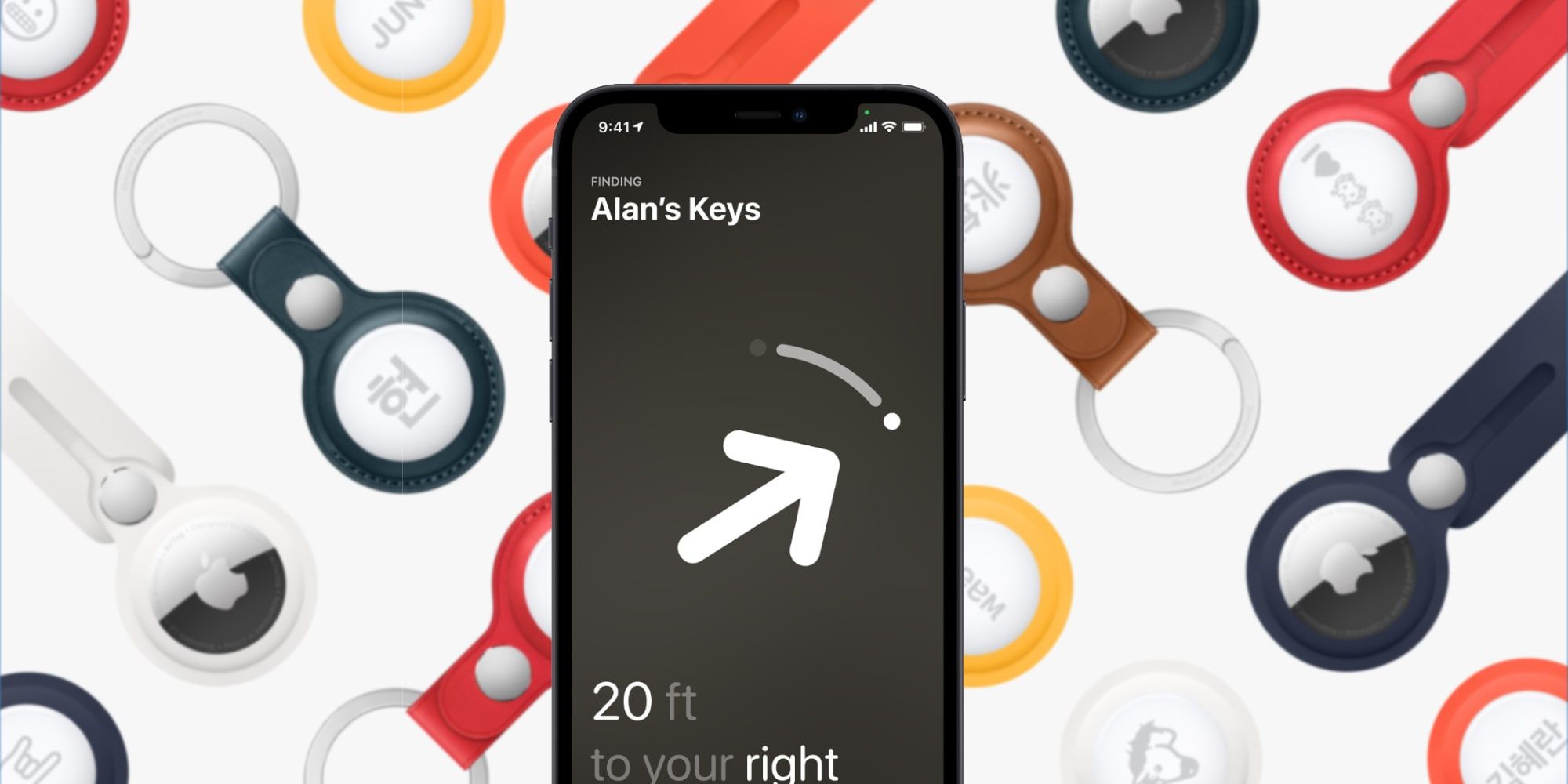During its ‘Spring Loaded’ event, Apple announced the long-rumored AirTag, an advanced item-tracking beacon based on ultra-wideband technology combined with Bluetooth and near field communication (NFC). Together with Apple’s existing Find My network, which has been helpful in locating an iPhone and other Apple devices, the AirTag expands the functionality to any item with a place to attach an AirTag. Apple didn’t share the dimensions of its tracker, but based on images it appears to be less than 1.5-inches in diameter.
Apple’s spring event was loaded, just as promised in the title, revealing a new color for the iPhone 12, an M1 iMac available in seven colors, an M1 iPad Pro, an upgraded Apple TV, and the AirTag. The spring event has never seen this many new products and throughout the event, Apple spoke about environmental responsibility and how many of the components involved recycling and reduction of materials to limit the impact on the climate. In fact, the company is currently carbon neutral and is planning to reach net-zero climate impact, including the supply chain, by 2030. The AirTag, for example, uses 100-percent recycled tin in the solder of the mainboard and it is claimed to be free of harmful substances. The packaging uses wood fiber that is recycled or that comes from responsibly managed forests.
Apple’s new AirTag is a location beacon, similar to what Tile and other trackers offer, although it does incorporate new technology based on the U1 ultra-wideband chip found in the iPhone 11 and 12, the Apple Watch Series 6, and HomePod mini. This means any of those devices can help locate an AirTag with even greater precision, while Bluetooth can be used to locate an item when using an older iPhone or another device that is not equipped with a U1 chip. Using a network of approximately one billion devices worldwide, Apple’s Find My app and iCloud tool can pinpoint the location of an AirTag in almost any location. Apple made a point that privacy was paramount in developing its tracker. For example, location data and history is never stored inside the AirTag, and communication with the Find My network is end-to-end encrypted. This means even Apple won’t know the identity or the location of an AirTag or any device that helps to find it. That information is strictly for the owner of the device, as it should be.
How Apple's AirTag Works
When searching for an AirTag with the Find My app on an iPhone 11 or iPhone 12, a method Apple calls Precision Finding is employed. This uses ultra-wideband for accurate heading and range information to be shown on screen, pointing directly to the AirTag and estimating the distance. This updates in real-time when in motion, providing haptic vibration, sound, and on-screen information to guide the searcher to the AirTag attached to the lost item. If using a device without a U1 chip, Bluetooth is used and works much like a Tile tracker does, with the AirTag making a sound to help locate the lost item, but lacking the directional ability of the ultra-wideband technology. Both ultra-wideband and Bluetooth have limited reach, so when an AirTag is out of range of the searching device, the Find My network is used, drawing from billions of devices worldwide to find the missing luggage, keys, or other item. This is a very low power technology, so it won’t impact battery life for iPhone users. While the Find My network is quite large, there are some countries where it is not allowed, notably much of the Middle East region. Apple says Find My will work in those locations when the AirTag is nearby, but the network cannot help track items in a wider range.
The AirTag is rated IP67 for water resistance at up to one meter of water for 30 minutes, so it can still function if dropped outside in the rain. Apple does note that this may change over time and indicates handling and care instructions will be provided with the device. It’s also dust-resistant and made of stainless steel with a removable cover. The battery is expected to last at least a full year and can be replaced by the owner. Priced at $29 each or four for $99, Apple seems to have another winning product on its hands. Along with the AirTag itself, Apple announced several accessories, including loops that can be wrapped around handles and keyrings. The huge number of iPhone owners in the United States alone is likely to make this new Apple product an almost guaranteed success.
Source: Apple


